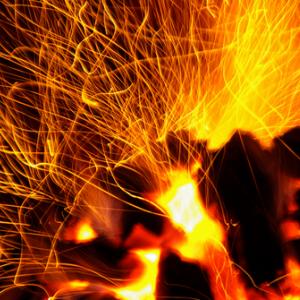Posts By This Author
The Deadly Misnomer of 'Fossil Fuels'
Just because you can set something on fire doesn't mean you should.
COAL, NATURAL gas, petroleum. Thoughtlessly we call these substances “fuels”—fuels to burn for creating pleasant climates inside homes and offices; fuels to power appliances and engines. For years, like nearly everyone, I never thought beyond our mere use of these things. I neglected to consider their role in the Earth’s wider economy.
This all changed when my family moved to a Wisconsin peatland in 1972. Since then, conducting research there with my graduate students has produced four decades of discovery.
For thousands of years, wetland plants and algae in a bay of glacial Lake Waubesa took carbon dioxide from the atmosphere. They transformed it by photosynthesis into the carbon structure of life, eventually adding their remains, page upon page, to the accumulating peat. Eventually, this peat filled the bay for an area more than a mile long, reaching a depth of 95 feet at the present lake edge. When first I walked here, I saw the vibrant surface of plants and wetland creatures; now, in my mind’s eye, I also see the deep-layered remains of creatures below.
Also standing and walking here (much more gracefully than I) are sandhill cranes. These stately creatures, as conservationist Aldo Leopold observed, “stand, as it were, upon the sodden pages of their own history.” Elsewhere, the sodden pages of peat deposits have been cut over the ages to be dried for fuel. The early Romans saw this practiced by conquered peoples of northern and western Europe. Peat was also used as fuel in Ireland, Scotland, and northern Europe after forests were cleared for agriculture. And peat is the precursor of coal, transforming under geologic pressure into brown coal, bitumen, bituminous coal, and anthracite.
Wondrous Cycles of Life
Excerpt from "Song of a Scientist: The Harmony of a God-Soaked Creation"
JOIN ME IN your imagination for a few minutes in the high Andes. The bamboo that arches over us here—like the tree that arches over your yard or nearby park—is at this very moment taking the carbon you and other creatures are breathing out. It then reforms this carbon into carbohydrate, powered by solar energy and hydrated with water (photosynthesis). It is making sugar from that CO2. The plant then uses this sugar to provide the energy and materials for making all sorts of new substances.
For example, if I take a leaf from a plant (such as lettuce or kale) and chew and swallow it, it is transformed within me to produce materials for sustaining my life, powering my walking and speaking and writing. And from its use I release carbon dioxide, returning through this gas the very same carbon the leaf had absorbed through the stomatal pores on its surface and incorporated into the leafy food I ingested. To complete the remarkable carbon cycle, the carbon I breathe out is eventually taken up again by green plants that in turn produce food for humans, bugs, birds, and batrachians! (Let’s hear a doxology!) Without green plants, all human life perishes—and most other animate life as well.
Plants accomplish a myriad of activities out of our sight. Beneath lawns and gardens, forests and prairies, roots are moving water from the soil, pulling it up through stems into the leaves and back into the atmosphere. All forests, all trees, all vegetation—great movers of water—are constantly returning to the atmosphere water that had fallen as rain. It rises again and again within the thin fabric of the biospheric envelope and condenses into those white clouds you see above to fall down again to water the earth.
The Passion of the Gulf
The BP catastrophe invites us to take a hard look at ourselves. We invited eight writers to offer their reflections on images from the Gulf Coast disaster.


